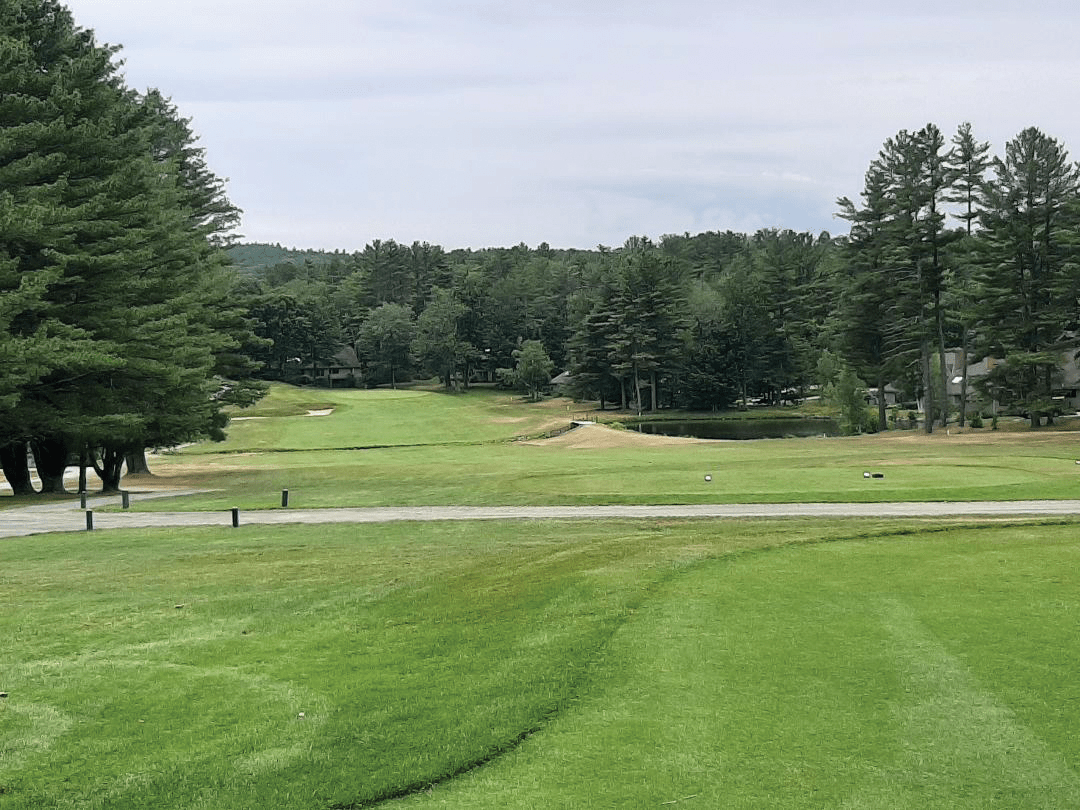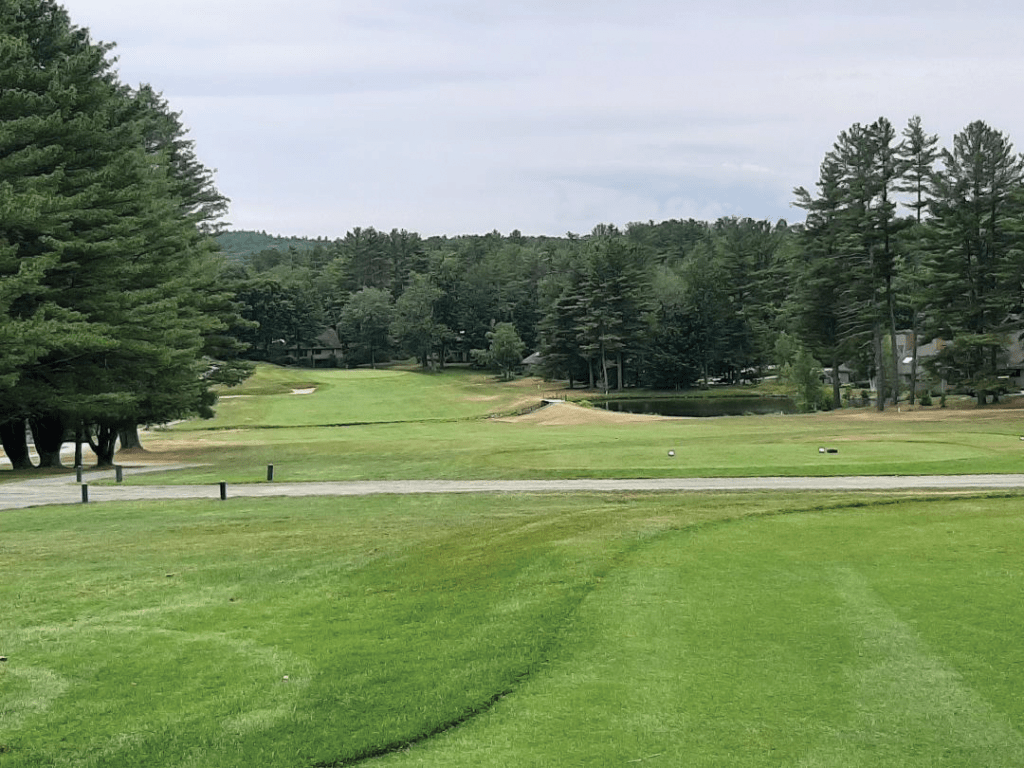The Lasting Legacy of Vesper Velvet Bentgrass


Vesper Country Club
Over the centuries golf has seen many colorful mad scientists among its immortals. Bryson DeChambeau is the latest to wear the moniker for his incessant club tinkering and gobbledygook interviews. Pete Dye was called a mad scientist for his visually intimidating golf designs. Unorthodox swing genius Moe Norman is still revered as the maddest scientist of all and a cult hero to golf cognoscenti. And before that Allan Robertson never forgave Old Tom Morris for changing golf forever by promoting the gutta-percha golf ball. But when it comes to turfgrasses it was a bit of a mad scientist named Manny Francis who gave the world something called Vesper Velvet.
Vesper Velvet is not a DC Comics super-villain. Vesper Velvet is also not a James Bond girl, nor is Vesper Velvet a mortally venomous breed of Amazonian spider. It is, instead, one of the finest, old-school strains of bentgrass ever cultivated for golf. For several decades it was the go-to turfgrass for country clubs throughout the northeast U.S., and even now, although its star has faded, its legacy is still felt throughout golf.
“Back in the 1940s, Vesper Country Club in Massachusetts hired a legendary greenskeeper named Manny Francis, an affable Portuguese fellow who was renowned for his success at tinkering with turfgrasses, and he developed a strain called Vesper Velvet,” explained Doug Homan, now third-generation owner and operator of nearby Lake Sunapee Country Club, just over the border in New Hampshire. “Vesper Velvet was so successful that for many years it became the standard in the industry in New England.”


Its discovery was a coup that both saved the playing surface at Vesper Country Club and catapulted Francis into golf turfgrass immortality, but it had humble, homespun beginnings: Francis’s backyard.
“When Grandpa took the Vesper job back in 1947 the golf course was in awful shape. It was so bad in places, after you hit your approach into the green, you walked on planks over the mud to play your next shot,” explained Manny Francis, II, grandson of the original; and himself a golf course head superintendent at nearby Green Harbor Country Club. “My grandfather had already solidified a reputation for turfgrass problem solving, and was facing his biggest challenge yet at Vesper.”
Francis lived right near the course – in that respect, Vesper was a sort of homecoming for him – and he noticed a portion of his own backyard lawn that thrived and prospered all summer long, always green and lush. So he mowed it closely. When it tolerated being cut a height at which you could play golf, he brought it to the country club, nurturing it lovingly.
The experiment was a wild success.
What fine agronomic properties the strain had! It stood up tall. It had a wonderful, verdant color. It had no propensity to succumb to disease; indeed, it was quite a disease tolerant. And its low nitrogen uptake meant it didn’t need a lot of food to survive, saving the club time, money, and labor. How’s that for minimalism?
So Manny converted Vesper’s greens to the strain he found in his yard, and both he and the grass became legend. Vesper Velvet spread across the northeast – and even across the pond – with lickety-speed. In the course of its history over the decades, Vesper Velvet could be found at as iconic places as Fenway Park, the White House lawn, and Wimbledon’s tennis courts: quite an accomplishment for the son of a coffee farmer who was born on a ship making passage from Brazil to Portugal in 1919.
And with every runaway success, the legend of Manny Francis grew. Oh, the stories they tell about him!
- he would chew the grass, tasting it to test its acidity. “He didn’t just look at the plant; he understood it with his hands and his eyes. He and the plant had a synergy together and it blossomed through him,” Francis II recalled;
- he taught himself chemistry, agronomy, and other sciences, wearing out copy after copy of textbooks;
- and he was so close with quintessential American golf designer Donald Ross, that some people still refer to Vesper Country Club as a Manny Francis design in the Donald Ross style. In fact, Francis carved out a second career regionally as a well-respected golf course architect.
But Vesper Velvet wasn’t done: next came the legacy, the offshoots. One place was Homan’s beloved Lake Sunapee.
“My grandfather, who knew Manny well, cultivated his own close-cousin cross-strain called Lake Sunapee Velvet, and it’s our entire playing surface, with the exception of our 10th green, which is actually Vesper Velvet,” Homan stated proudly, and rightfully so. Lake Sunapee’s Velvet proved equally successful and as much in demand as it close cousin. With no sod farm, the club would cut the sod from their 16th fairway.
“Money was tight,” Homan confided, “it was touch and go economically for a long time, and with our turf being so hardy and sustainable, we could sell off acres of extra sod, rolling it up, and trucking it to clubs all across the northeast that would then unroll it like a carpet.”
Sadly, Vesper Velvet’s sun has set; its glory days have passed. It just can’t thrive in warm weather climates, and it tends to be soft and grabby as opposed to modern golf’s faster, firmer playing surfaces. On Velvet you can play darts with your irons, but you can’t putt from far off the green. Moreover, with thick, clingy rough making it seem more like Vesper Velcro, balls never roll and tend to sink, yet another reason why Velvet golf courses play much longer than the scorecard reads.
Where once over 70 clubs in New England sported Vesper Velvet, now only a precious few remain that have been able to maintain it through the decades. You’ll find the occasional Vesper green here or there on a course that otherwise had no Vesper anywhere else; Francis was asked to re-do a green or two at dozens of clubs over the course of his career. Even the 10th green at Lake Sunapee is Vesper, not Lake Sunapee Velvet. But now, sadly, even Vesper Country Club itself has abandoned its namesake turfgrass for a more modern blend of A1 and A4.
Still, even now, descendents of Vesper Velvet populate the greatest American country clubs. One course we featured here in Golf Course Trades recently, the gorgeous and beguiling Bayonne Golf Club, overlooking New York harbor, features one of the most popular scions of Vesper: SR-7100, obtained from the famous Seed Research of Oregon.
“I think what happened with those turn of the century New England courses – 1900-1920 – was that there were limited seed sources, and one of the best and most popular was something called German Mixed Bentgrass. They have vast natural fields of bentgrass growing in Germany and Austria and central Europe that are really meant as sheep pastures,” explained Rich Hurley, PhD., one of the country’s foremost turfgrass experts and the man most responsible for Bayonne’s choice of velvet bents for their greens. Hurley’s experience with Vesper and its offshoots goes all the way back to his college days when as a grad student at the University of Rhode Island he worked with another legend of the industry, Dr. Richard Skogley, and as part of Skogley’s team, they released Kingston, another wildly successful variety of Velvet. Since then Hurley has bred many other modern, popular superbents.
“So the Europeans cultivated crops of seed, and when it came to America, it would result in a natural mix that varied from location to location. So other varieties of velvet originally were just localized selections,” Dr. Hurley concluded. “The SR-7100 used at Bayonne is a variety made out of collections of various velvets.”
Hurley’s mastery of not only velvet, but turfgrasses in general, also brought him to the White House. In 1996 Bill Clinton had him install a bentgrass putting green on the White House grounds. He has a personalized thank note from Clinton as a keepsake for his work.
Still, to others Velvet is not so much a science as it is a religion.
“To me, Vesper Velvet is lore,” said Francis II. I grew up playing golf on it. But it’s more than that. To us, the grass is like offspring, a family member.”
When not reporting live from major sports championships or researching golf courses for design, value, and excitement, multiple award-winning sportswriter Jay Flemma is an entertainment, Internet, trademark, and banking lawyer from New York. His clients have been nominated for Grammy and Emmy awards, won a Sundance Film Festival Best Director award, performed on stage and screen, and designed pop art for museums and collectors. Twitter @JayGolfUSA
Recent Posts
South Carolina State Leaders Honor Green’s Superintendent Career
South Carolina’s House of Representatives today honored the career of golf course superintendent Chuck Green.…
Branson, Missouri: 5 Reasons Why it is a Must-Visit Travel and Golf Destination
Branson, Missouri, is booming as a must-visit destination for golf enthusiasts and travelers alike. Nestled…
Preview more than 1,000 rounds of golf available in GCSAA’s Rounds 4 Research online auction
The Golf Course Superintendents Association of America (GCSAA) Rounds 4 Research program offers golfers the…
EcoBunker Synthetic Revetting More Sustainable than Natural Turf*
*A recent report by the Welsh government has found that EcoBunker synthetically revetted bunkers have…
SiteOne® Hires Dan Carrothers as VP, Agronomic Business Development
SiteOne® Landscape Supply is pleased to announce Dan Carrothers as the new Vice President for…
Superintendents Online Turf Directory – EVERYTHING TURF
Our online directory, directory.GolfCourseTrades.com is the go-to resource for the busy superintendent. It is your opportunity…

